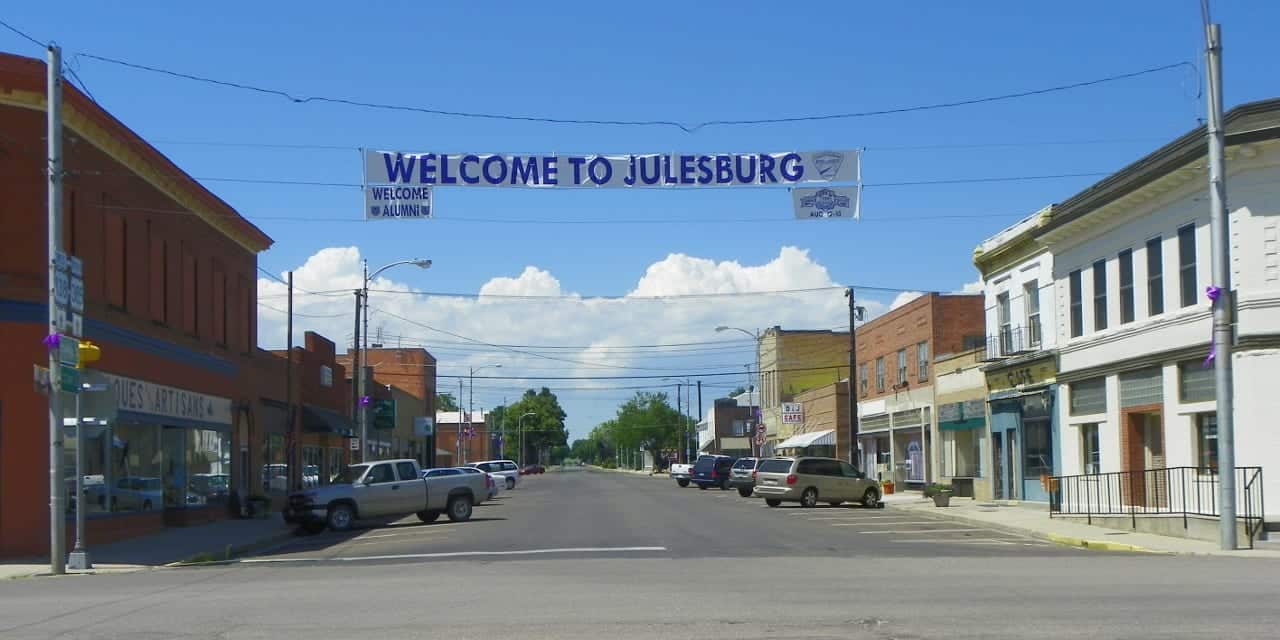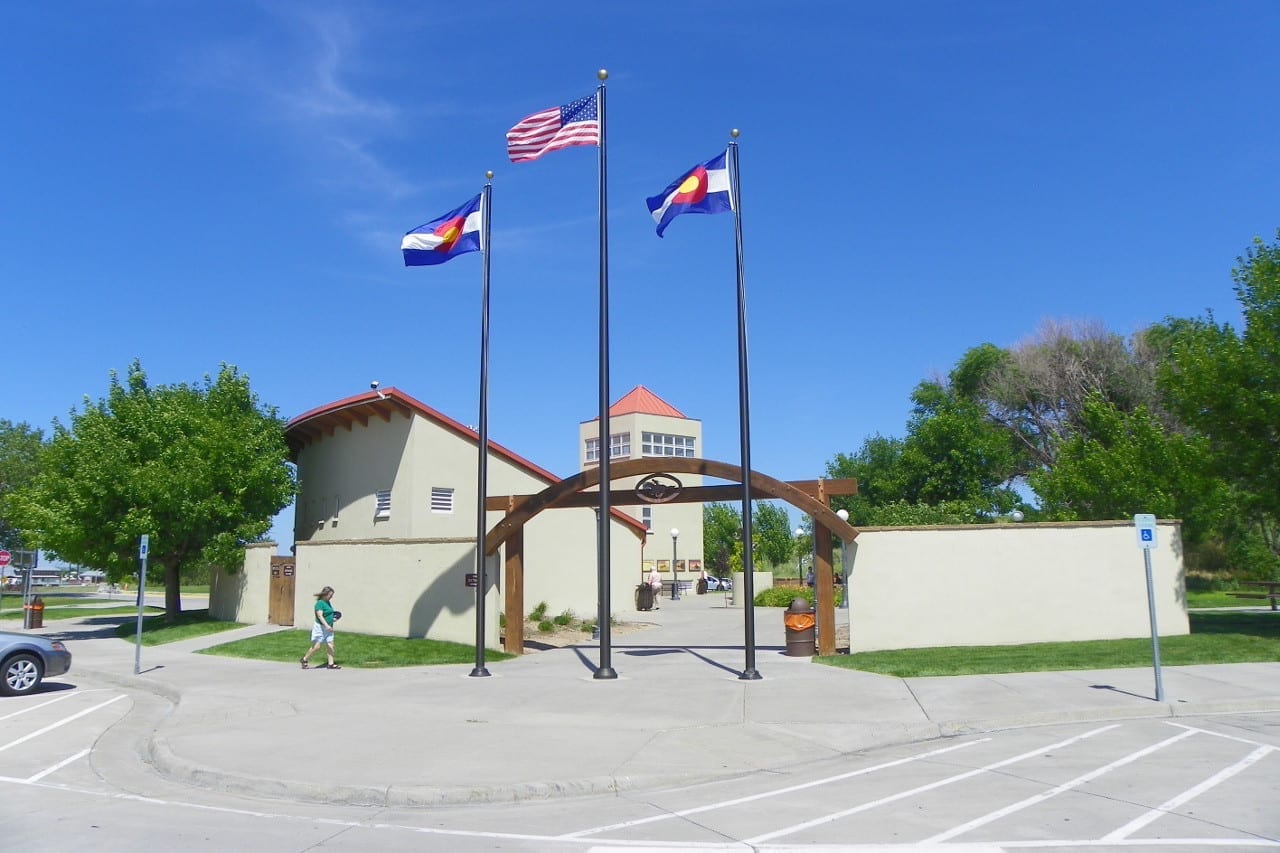
Julesburg: Where American Legends Were Built, Burned, and Reborn
On the vast, windswept plains of northeastern Colorado, near the Nebraska border, lies Julesburg – a town that, at first glance, appears unassuming. Grain elevators pierce the sky, agricultural fields stretch to the horizon, and the quiet rhythm of rural life dominates. But beneath this tranquil facade, Julesburg holds a secret: it is not just one town, but four. And in its tumultuous, often violent history, it embodies a kaleidoscope of American legends – the pioneering spirit, the relentless march of the railroad, the brutal clash of cultures, the struggle for law and order, and the enduring human capacity for reinvention.
Julesburg is a unique historical anomaly, a geographical palimpsest where the ghosts of the Wild West still whisper on the prairie winds. Its repeated destruction and rebuilding in slightly different locations offer a singular lens through which to examine the epic, often brutal, narratives that forged the American West. It’s a place where the lines between history and folklore blur, and where every unearthed artifact tells a story of ambition, survival, and a frontier that was anything but tame.
The First Julesburg: A Den of Iniquity and Ambition

Our journey into Julesburg’s legendary past begins in the early 1860s, a time when the Pikes Peak Gold Rush was drawing thousands of hopeful prospectors westward. The Overland Stage Route, a vital artery for mail, passengers, and freight, snaked across the continent, and one of its most crucial stations was established on the south bank of the South Platte River. This was the first Julesburg, named not for a founder or a hero, but for Jules Reni (sometimes spelled Beni), a French-Canadian station manager whose reputation was as volatile as the frontier itself.
Reni was a man of questionable character, known for his cruelty and his penchant for attracting outlaws and desperadoes. The station, a collection of sod and log structures, quickly gained a notorious reputation as a hub for gambling, drinking, and violence. It was a classic frontier town, where law was a suggestion, and justice was often meted out at the barrel of a gun. The Overland Stage Line, struggling to maintain order amidst the chaos, eventually fired Reni. But his legend, intertwined with the lawlessness he fostered, had already been etched into the landscape.
This era of Julesburg perfectly encapsulates the American legend of the "Wild West" – a time of untamed wilderness, sudden wealth, and even swifter death. It was an environment that bred characters both heroic and villainous, where reputations were forged in fire and blood. Mark Twain, travelling by stagecoach across this very landscape in the 1860s, captured the essence of the experience in "Roughing It," describing the blend of exhilaration and stark danger. He might well have passed through the first Julesburg, witnessing firsthand the raw, unvarnished reality of a frontier struggling to find its footing.
The first Julesburg’s story also intersects with another legendary figure: Jack Slade. Slade, a division superintendent for the Overland Stage, was a man of complex character – a former lawman turned notorious outlaw, known for his swift and brutal brand of justice. It was Slade who famously cornered Jules Reni, took him prisoner, and, in a moment of legendary frontier retribution, cut off his ears and nailed them to the telegraph pole as a warning. This act, whether fact or embellishment, cemented both men’s places in the annals of frontier lore, painting a vivid picture of a time when personal vendettas often superseded formal legal processes.
The Second Julesburg: Railroad Dreams and Native American Resistance
As the 1860s progressed, a new force began to reshape the American landscape: the Transcontinental Railroad. The Union Pacific, pushing westward, brought with it the promise of speed, efficiency, and a new era of connectivity. Just a few miles north of the original stage station, a new settlement sprang up along the railroad tracks – the second Julesburg. This town was a "hell on wheels" construction camp, a mobile city of tents and temporary buildings that followed the railroad’s progress. It bustled with workers, gamblers, prostitutes, and merchants, all drawn by the promise of quick money and the relentless forward momentum of progress.
However, the railroad’s advance was not without its costs, and here Julesburg’s story intertwines with another profound and tragic American legend: the conflict between westward expansion and Native American resistance. The influx of settlers, the decimation of the buffalo herds, and the seizure of ancestral lands fueled mounting tensions between the U.S. government and the indigenous tribes of the Great Plains, particularly the Cheyenne and Arapaho.
The infamous Sand Creek Massacre of 1864, where U.S. volunteer cavalry attacked a peaceful Cheyenne and Arapaho village, sparked a furious retaliation across the plains. In January 1865, a coalition of Cheyenne, Arapaho, and Sioux warriors, seeking revenge and protesting the relentless encroachment on their lands, launched a series of coordinated attacks on isolated ranches, stage stations, and settlements along the Platte River. Julesburg, with its strategic location and its symbolic representation of the invading culture, became a prime target.

In what became known as the Battle of Julesburg, or more broadly, the Julesburg Raid, Native American warriors attacked the second Julesburg. Though the soldiers and civilians barricaded themselves in the telegraph office and defended the fort (Fort Rankin, later Fort Sedgwick), the town itself was largely destroyed. The general store, the stage station, and many of the makeshift buildings were plundered and burned. This attack, followed by further raids and eventual abandonment, led to the demise of the second Julesburg.
This chapter in Julesburg’s history is a stark reminder of the often-overlooked brutality of the frontier, challenging the romanticized image of the "cowboys and Indians" narrative. It underscores the immense human cost of Manifest Destiny and the fierce, understandable resistance of those whose way of life was being obliterated. The legends here are not just of courage and ambition, but also of profound injustice and the enduring legacy of conflict.
The Third and Fourth Julesburgs: Resilience and Reinvention
Despite its destruction, the strategic importance of the location meant Julesburg could not simply disappear. A third Julesburg emerged, again near the railroad, a testament to the relentless drive of settlement and commerce. But this too was eventually abandoned as the railroad, in its never-ending quest for efficiency, relocated its tracks slightly.
The current, fourth Julesburg was established in 1881, a few miles east of its predecessors. This time, it was designed for permanence, laid out with a grid of streets, and intended to serve as a hub for the burgeoning agricultural economy of the region. It became a thriving community, bolstered by the arrival of other railroad lines and the development of irrigation techniques that transformed the arid plains into productive farmland. This Julesburg, the one we see today, represents the triumph of persistence, the legend of American resilience, and the capacity for communities to rebuild and reinvent themselves after periods of immense upheaval.
Julesburg as a Microcosm of American Legends
What makes Julesburg so compelling is its ability to distill so many iconic American legends into a single geographical point:
- The Pioneer Spirit: From the gold rushers to the homesteaders, the drive to push westward, to tame the land, and to build new lives against incredible odds is palpable in every iteration of Julesburg. It’s the legend of rugged individualism and unwavering determination.
- The Wild West and Lawlessness: The tales of Jules Reni and Jack Slade, the gambling dens, and the constant threat of violence perfectly embody the frontier’s chaotic early days before organized law enforcement took firm root.
- The Railroad’s Transformative Power: The arrival of the Union Pacific not only moved the town but fundamentally changed the pace of life, commerce, and settlement. It’s the legend of technological innovation driving national expansion.
- Native American Resistance and Conflict: The attacks of 1865 are a grim reminder of the profound and often brutal clash between indigenous peoples and the encroaching American expansion, a story of resistance and displacement that is central to the nation’s history.
- The Cycle of Destruction and Rebirth: The "four Julesburgs" narrative itself is a powerful legend of human endurance – the ability to rise from the ashes, to learn, adapt, and build anew, mirroring the nation’s own history of overcoming challenges.
Today, modern Julesburg embraces its past. Historical markers dot the landscape, guiding visitors to the sites of the earlier towns, now little more than depressions in the prairie or faint outlines of foundations. The Fort Sedgwick Historical Society and Museum preserves artifacts and stories, ensuring that the legends are not forgotten. Walking these quiet fields, one can almost hear the rumble of the stagecoach, the whistle of the locomotive, the shouts of the outlaws, and the war cries of the warriors.
Julesburg, Colorado, is more than just a dot on a map; it is a living, breathing testament to the tumultuous birth of the American West. Its four incarnations serve as a powerful, multi-layered narrative of the legends that define a nation – stories of courage and conflict, innovation and destruction, and above all, the enduring spirit of a people determined to carve out a future, no matter how many times they have to start over again. It reminds us that history isn’t always neat or linear, but often a wild, winding saga, etched deeply into the very land beneath our feet.


